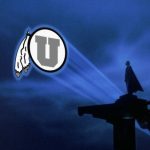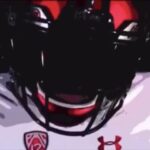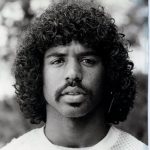Run vs Pass stats for 2017, 2018, 2019, 2020
Welcome Cyclones Fans! › Forums › Utah Utes Sports › Football › Run vs Pass stats for 2017, 2018, 2019, 2020
- This topic has 11 replies, 6 voices, and was last updated 3 years, 8 months ago by
 MDUte.
MDUte.
-
AuthorPosts
-
-
 MDUteParticipant
MDUteParticipantThere’s been a lot of talk about how we aren’t passing the ball enough. Just wanted to dig into our team stats to see the actual numbers.
2017 (Taylor): 953 total plays; 526 Rushing attempts to 427 Passing attempts; 55% Run vs 45% Pass
2018 (Taylor): 971 total plays; 563 Rushing attempts to 408 Passing attempts; 58% Run vs 42% Pass
2019 (Ludwig): 912 total plays; 591 Rushing attempts to 321 Passing attempts; 65% Run vs 35% Pass
2020 (Ludwig): 347 total plays; 191 Rushing attempts to 156 Passing attempts; 55% Run vs 45% Pass
2019 was our best team this past decade. And given the fact that we won most of our games by wide margins we were able to keep the ball on the ground in the 4th quarter to kill the clock. That skews our rushing attempts higher. But from what I’m seeing, we typcially run a fairly “balanced” offense of 55 – 60% Run to 45 – 40% Pass.
Personally, I don’t think we should ever pass more than run. And I don’t think I’d even be in favor of a 50/50 attack. My preference would be between 60/40 and 55/45 which is pretty much where it looks like we are. But I’m curious what everyone thinks would be optimal?
-
 CBParticipant
CBParticipant50-55% Run / 45-50% Pass would be ideal in my book
-
 GameForAnyFussParticipant
GameForAnyFussParticipantThe meaning of optimal changes based on personnel. When we have strong running backs, optimal means run more. When (if) we have a strong WR core and QB, optimal means pass more.
-
 MDUteParticipant
MDUteParticipantFair point, however, I’d argue that we’ve never had better WRs than RBs. And I don’t think we ever will while Whitt is HC because he believes in a smash mouth football identity which attracts better RBs than WRs.
-
 GameForAnyFussParticipant
GameForAnyFussParticipantFor sure…I agree with what you’re saying. It’s kind of a vicious cycle – we run the ball a lot, so we attract more RB talent, so we run the even ball more, so we attract even more RB talent, etc etc. And meanwhile the passing game suffers.
This is like what happened with Mike Leach at WSU, but opposite.
-
 MDUteParticipant
MDUteParticipantI will say, though, that I agree with what OnlyU said recently that if our QB play begins to take off with all of the talent we are starting to consistently bring in, more and more talented receivers will want to come to Utah as well. WRs will go wherever they feel they’ve got an opportunity to catch the ball. It’s not like we don’t ever throw the ball…the stats don’t lie. We throw it roughly 45% of the time. But we need our QB(s) to show they can deliver the ball accurately and efficiently when passing to our WRs. Seeing the level of QB talent rise in the program has me excited and optimistic that we will get there.
-
-
-
-
 CharlieParticipant
CharlieParticipantThe percentage mix is just a starting plan. Most important is the WRs ability to gain separation than ability to avoid drops. Last, to a lesser degree, OL protection. As the game gets going WR separation even on many running plays is noted. WRs that can separate and don’t drop will not be ignored unless the QB is below average. The OC wants to keep moving the chains and favors what is currently working best. A good running game helps create separation. Good separation causes adjustments that helps the running game.
In my opinion, last year QB accuracy held us back. With Huntley, I felt WR separation held us back. Poor separation will make the OL look bad (not to say OL mistakes will also make them look bad). Good WR separation without drops can overcome average OL play with quicker developed routes. My expectation for next year will be first we need WRs with separation and low drops, to a lesser degree, OL needs to eliminate mistakes more than better technique. Last, the QB needs to read the D and be accurate, oddly, my least worry for next year. Too often I have seen a Ute QB looking at covered WRs causing us to question QBs and OL. On the flip side, especially last year, I saw the Y QB throwing to a completely separated WR 90%+ on passing plays, which makes the QB look like an all-star (due to competition level). But I am bias, with middle school kids I worked with WRs and DBs.
-
Yergensen
ParticipantFor me it’s less about how many times we throw it and more about who we throw it to. BT and JD were playmakers in 2019 and they averaged 2 touches a game. IMO has to be 5+ touches per game for your playmakers. Bama got theirs 10+ a game this past season, that’s smart. We get ours 2 a game, that’s not smart.
-
 MDUteParticipant
MDUteParticipantI agree with you @Yergensen. So we typically average around +or- 30 pass attempts per game. I’m curious, how would you divy out the targets to Covey, Kuithe, Dixon, Enis, Pledger etc? How many throws do certain WRs need to get their way per game?
-
Yergensen
ParticipantIMO Kuithe, JD, and Covey each need at least 5 receptions a game, so assuming a 70% completion rate they would need between 7 to 8 targets each per game.
On 30 attempts that doesn’t leave alot, but we also get all 3 of these guys involved in the run game (jet sweeps, etc.). So, maybe these touches could factor as well.
-
 MDUteParticipant
MDUteParticipantMakes sense to me, thanks. So roughly 24 targets to our top 3 WR targets. That leaves a couple to RBs out of the backfield and 1 or 2 to guys like Enis, Fotheringham/Kincaid, Parks, Cope etc. And I agree…jet sweeps to guys like Dixon should count as a target in terms of keeping him happy and involved in the offense.
-
-
-
-
 EagleMountainUteParticipant
EagleMountainUteParticipantI hate teams that continue to pass with a comfortable lead. We all know who I am referring to.
-
-
AuthorPosts
- You must be logged in to reply to this topic.
